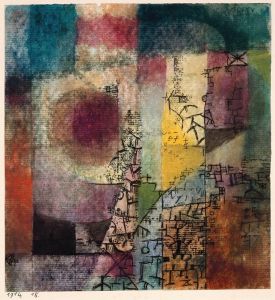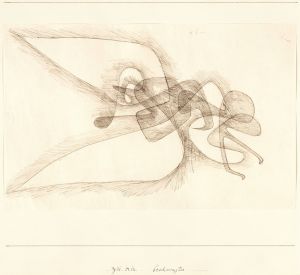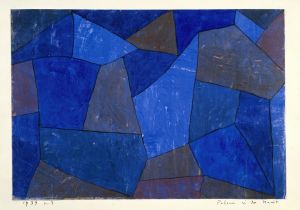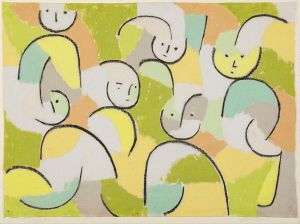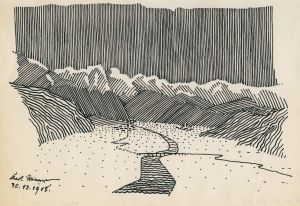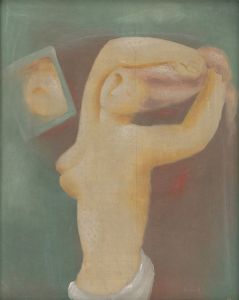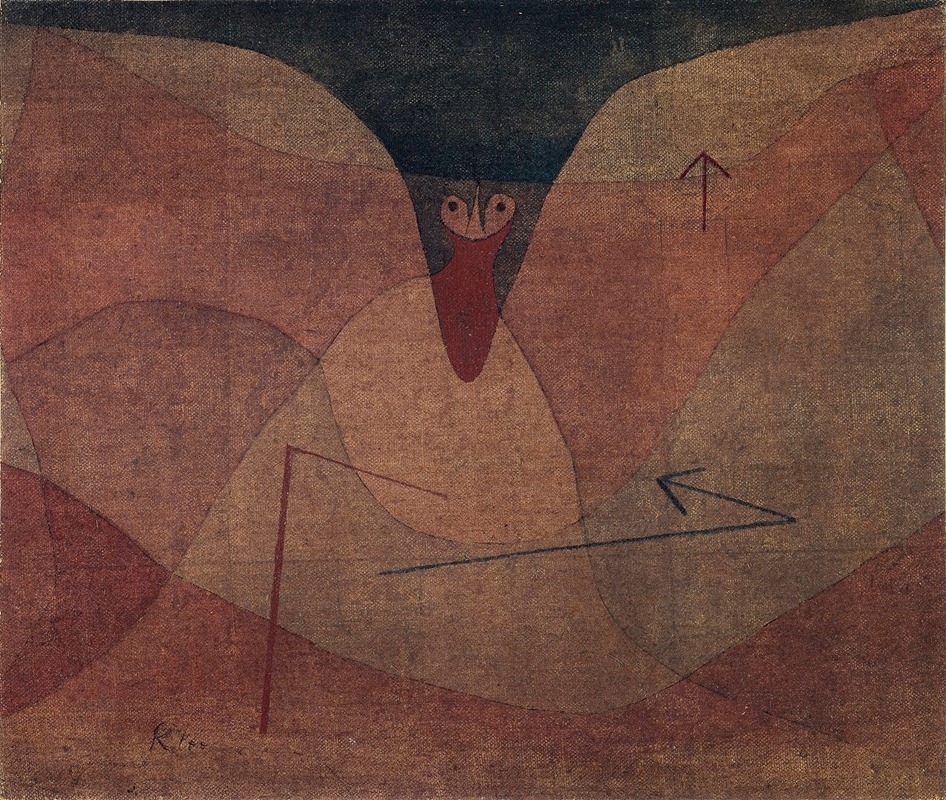
Aviatic Evolution
A hand-painted replica of Paul Klee’s masterpiece Aviatic Evolution, meticulously crafted by professional artists to capture the true essence of the original. Each piece is created with museum-quality canvas and rare mineral pigments, carefully painted by experienced artists with delicate brushstrokes and rich, layered colors to perfectly recreate the texture of the original artwork. Unlike machine-printed reproductions, this hand-painted version brings the painting to life, infused with the artist’s emotions and skill in every stroke. Whether for personal collection or home decoration, it instantly elevates the artistic atmosphere of any space.
Paul Klee, a Swiss-born artist, is renowned for his unique style that blends elements of expressionism, cubism, and surrealism. One of his notable works is "Aviatic Evolution," created in 1922. This painting is a part of Klee's exploration of abstract art, characterized by his use of geometric shapes, vibrant colors, and symbolic elements.
"Aviatic Evolution" reflects Klee's interest in the concept of flight and the technological advancements of his time. The early 20th century was a period marked by significant developments in aviation, and Klee, like many artists of his era, was fascinated by these changes. This painting captures the essence of movement and transformation, themes that are central to the idea of evolution, both in nature and technology.
In "Aviatic Evolution," Klee employs a series of abstract forms that suggest the dynamic motion of flight. The composition is structured with a variety of geometric shapes, including circles, lines, and curves, which interact with each other in a harmonious yet complex manner. The use of color is particularly striking, with Klee's palette ranging from warm earth tones to cool blues and greens. This combination of shapes and colors creates a sense of rhythm and fluidity, evoking the continuous progress and innovation associated with aviation.
Klee's technique in this painting is indicative of his broader artistic approach. He often used a method of layering colors and textures to achieve depth and richness in his work. This technique can be seen in "Aviatic Evolution," where the interplay of light and shadow adds to the painting's dynamic quality. The abstract nature of the work allows viewers to interpret it in various ways, inviting them to engage with the painting on a personal level.
The title "Aviatic Evolution" itself suggests a narrative of growth and change. "Aviatic" refers to anything related to aviation, while "evolution" implies a process of development and transformation. This duality is reflected in the painting's composition, where the abstract forms can be seen as both mechanical and organic, symbolizing the intersection of technology and nature.
Paul Klee's work, including "Aviatic Evolution," has had a lasting impact on the art world. His innovative use of color and form has influenced numerous artists and movements, and his paintings continue to be studied and admired for their complexity and beauty. "Aviatic Evolution" is a testament to Klee's ability to capture the spirit of his time while also transcending it, creating art that is timeless and universal.
Overall, "Aviatic Evolution" is a compelling example of Paul Klee's artistic vision. It encapsulates his fascination with the modern world and his ability to translate that fascination into a visual language that is both abstract and deeply expressive.






